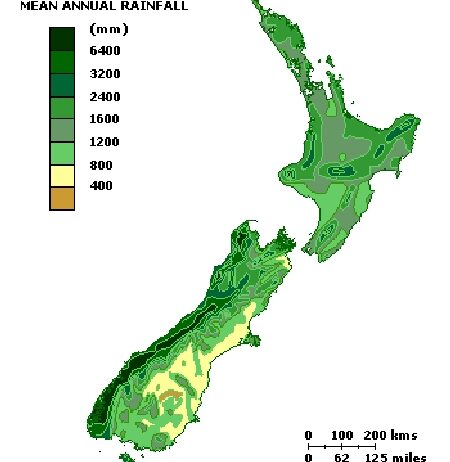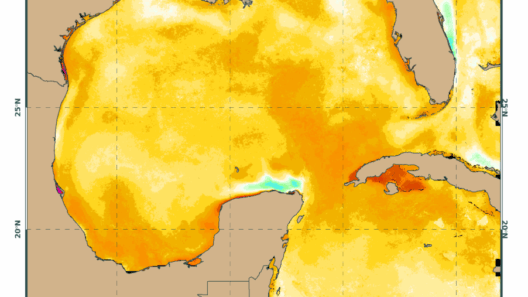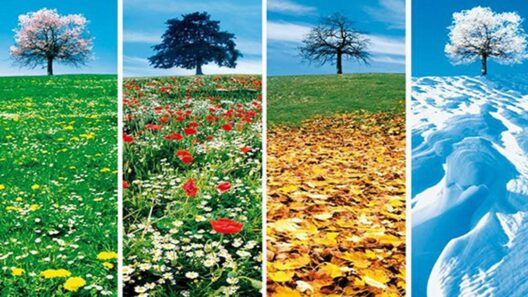New Zealand, a veritable gem nestled in the South Pacific, stands as an emblem of biodiversity flourishing under a unique climatic confluence. Its weather patterns, often perceived as capricious, have induced an intriguing reversal of seasons. Here, summer dances with winter, meriting examination not just for its surface charm but for its deeper implications on environmental equilibrium and ecological diversity.
To comprehend the duality embedded in New Zealand’s climate, one must first acknowledge its geographic disposition. The islands are straddled by the roaring Pacific and Tasman seas, which shape their weather systems in ways that are both unpredictable and enthralling. It is a land where snow-capped mountains gaze across lush green valleys, and where pristine beaches can be basking under summer sun while the alpine regions are blanketed in winter’s embrace. This juxtaposition presents an ambiance of constant transformation and perpetual surprise.
New Zealand’s seasons reverse in a way that defies the norms of the Northern Hemisphere. With summer taking center stage from December to February and winter from June to August, residents and visitors alike experience a disorienting yet fascinating rhythm. This climatic peculiarity does more than simply bewilder tourists; it has profound implications for the native flora and fauna, which have adapted splendidly to these diverse environments. The ability to thrive in such a dynamic climate underscores the resilience of New Zealand’s ecosystems.
Such adaptability is exemplified in the native bush, where the dense canopies of towering kauri trees provide shelter for a myriad of species. These trees, some of the oldest living organisms on the planet, have stood the test of climatic volatility. From the humid temperatures experienced during the warm months to the brisk, biting cold of the winters, the kauri, along with other indigenous species, flourish in an ecosystem defined by diversity. This tapestry of life symbolizes not only the beauty of resilience but also the intricate interdependence between species and their habitats.
Moreover, New Zealand’s distinctive climate acts as a crucible for its biodiversity. It is a sanctuary for over 80 species of birds—many of which are endemic and increasingly threatened. The Kiwi, that iconic flightless bird, epitomizes the challenges faced by New Zealand’s wildlife. Its existence in varied habitats—from coastal wetlands to temperate forests—is a testament to the deep-rooted relationship between the climate and the survival of species. As the winds shift and the seasons change, these creatures have adapted to a range of environments, thereby highlighting the evolutionary adaptability sculpted by the land’s volatile nature.
Furthermore, the climatic conditions have played a pivotal role in sculpting local cultures and economies. Traditional Māori practices are deeply entwined with environmental rhythms. The Māori calendar is intricately linked to seasonal changes, guiding agricultural practices, fishing, and other subsistence activities. This rich tapestry of life, dependent on an understanding of the climate, illuminates a profound connection to the land that contemporary society often overlooks. The collective wisdom that has emerged through generations attests to the necessity of environmental stewardship and sustainable practices.
Nevertheless, the allure of New Zealand’s enchanting climate should also be tempered with caution. Climate change poses an existential threat, threatening to upend the delicate balance that has allowed this paradise to flourish. Fluctuations in temperature, precipitation patterns, and extreme weather events jeopardize the ecosystems that have adapted over millennia. It is imperative to recognize that the idyllic scenery, while captivating, is vulnerable. The specter of climate disruption looms large over the future of this unique biome.
Combating these threats requires vigilance and action. Initiatives aimed at preservation and restoration are no longer optional; they are integral. Advocating for conservation practices, supporting sustainable agriculture, and safeguarding natural habitats is critical to ensuring that both the irreplaceable biodiversity and the nuanced beauty of New Zealand endure. Each action contributes to a larger narrative—one that speaks of urgent adaptation in the face of inevitable change.
Moreover, New Zealand’s climate serves as a microcosm for global climatic shifts. Its experiences can yield insights valuable worldwide. As nations grapple with the ramifications of climate change, the lessons learned from New Zealand’s adaptive strategies can provide a roadmap for preserving biodiversity and succeeding in sustainable policies globally. Knowledge cultivated through New Zealand’s unique climatic conditions can aid in forming resilient networks dedicated to environmental stewardship, fostering hope and collective resolve.
In summary, New Zealand’s climate offers not only a spectacle of shifting seasons and thriving ecosystems but also challenges that resonate well beyond its shores. It is a reflection of nature’s incredible adaptability, underscoring the necessity for awareness and action. As its natural landscapes flourish in vibrant contrasts, they prompt the province of inquiry: will humanity rise to the occasion and protect the delicate balance forged by eons of climate? Ultimately, the fate of New Zealand’s climate, much like its seasons, hangs in an indeterminate balance, inviting strains of hope amid uncertainty.








